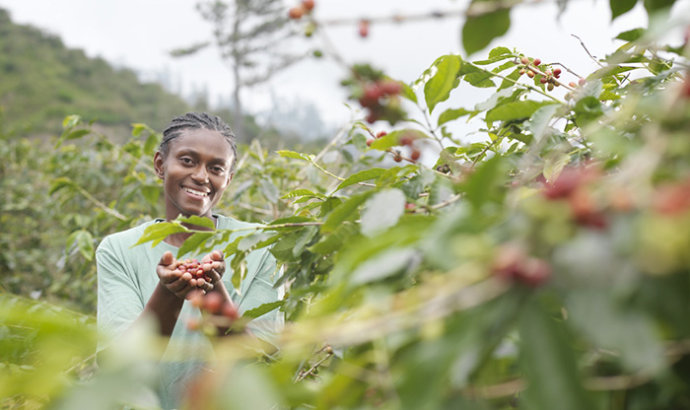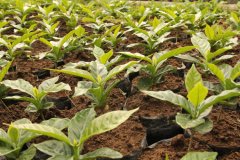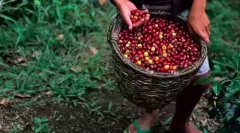Coffee harvesting and screening how coffee fruits become coffee beans
The work to be done in a coffee plantation is much more than planting and harvesting. Coffee fruits are picked almost immediately when they are ripe, and it is not easy to judge the fruits of a tree at different ripening stages.
In most Arabica coffee growing areas, ripe coffee cherries must be carefully picked by hand and placed in the picker's basket. its weight determines the wages of pickers, and in flatter and shorter trees, pick 100 kilograms a day. As the fruit ripens, a tree may be patronized many times on different days.
When most of a tree's cherries are ripe, a harvester may "peel" the whole tree, slide down the branch with his fingers, and let the counted and immature coffee cherries fall to the ground. Sometimes a cart will drive slowly along the coffee tree line, and the beating of its rotating arm will knock the looser ripe coffee cherries to the ground. Coffee harvesters were first used in Brazil, where the broad, flat terrain of large farms allowed coffee trees to be planted in the form of uniform trees and wide rows.
If the coffee cherry falls to the ground, it must be picked up with a rake and carried out by the workers. The worker took a large-hole sieve and threw the raked coffee cherries into the air several times: twigs, leaves, coffee cherries and dust were blown high, and the workers were like magic tricks to catch the falling coffee cherries when the wind blew something lighter to one side.
One of the main problems with manual peeling and machine harvesting is that many coffee cherries are not in the best ripening stage, and these unripe or overripe coffee cherries must be extra selected, otherwise the coffee grade will be reduced. When sorting coffee cherries by hand, the best Arakabi is screened several times, and the initial manual sorting is often done by women and children.

Important Notice :
前街咖啡 FrontStreet Coffee has moved to new addredd:
FrontStreet Coffee Address: 315,Donghua East Road,GuangZhou
Tel:020 38364473
- Prev

Conditions for growing coffee beans grow coffee at home
For professional baristas, please pay attention to the coffee workshop (Wechat official account cafe_style) Coffee is generally suitable for growing in places where the climate is warm, sunny and Rain Water is moderate (alternating wet and dry climate). The circular zone centered around the equator and between the north and south latitudes of 25 degrees is the natural growth area of coffee, which is usually called the coffee belt. 1. Climatic conditions
- Next

The Secret of Kenyan Coffee beans characteristics of Kenyan Coffee
The secret of Kenyan coffee Kenya AA coffee is one of the rare good coffee, it is famous for its strong aroma and acidity balance, it is perfect and balanced, and has a wonderful and strong flavor, both fresh and not domineering, is a complete but not heavy taste experience. Kenyan coffee from Africa is the most popular coffee in Europe. It has a wonderful and strong flavor; Qing.
Related
- Beginners will see the "Coffee pull flower" guide!
- What is the difference between ice blog purified milk and ordinary milk coffee?
- Why is the Philippines the largest producer of crops in Liberia?
- For coffee extraction, should the fine powder be retained?
- How does extracted espresso fill pressed powder? How much strength does it take to press the powder?
- How to make jasmine cold extract coffee? Is the jasmine + latte good?
- Will this little toy really make the coffee taste better? How does Lily Drip affect coffee extraction?
- Will the action of slapping the filter cup also affect coffee extraction?
- What's the difference between powder-to-water ratio and powder-to-liquid ratio?
- What is the Ethiopian local species? What does it have to do with Heirloom native species?

